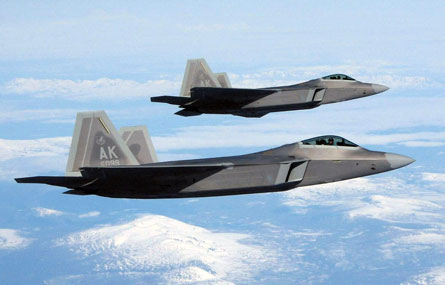The US Air Force is close to launching a new airborne system that can serve as a bridge between disparate datalinks and introduce the Lockheed Martin F-22 fighter to the battlefield network.
The Bombardier Global Express XRS business jet, meanwhile, has emerged as a surprise, leading candidate for the so-called objective gateway increment 1 programme.
If accepted, the objective gateway would become the first military role in the US inventory for the Canadian-built business jet, but the second worldwide. The UK Ministry of Defence is already a customer, with the Global Express the surveillance platform for its Raytheon Systems-delivered Airborne Stand-Off Radar system (pictured below).
 |
|---|
© Raytheon Systems |
The US Air Force is in the final stages of evaluating its acquisition strategy for the airborne platform's payload, but the programme is likely to build on a Northrop Grumman prototype system called the Battlefield Airborne Communications Node (BACN).
"We believe that BACN is the foundation for what is commonly known in the [US Department of Defense] as objective gateway increment one," says Claude Hashem, a Northrop vice-president for airborne communications. Hashem says that Northrop understands that USAF and senior DoD officials have recently reached an agreement to move forward, and that the USAF is nearing its final selection.
Northrop's mission systems sector developed BACN to serve multiple functions. Primarily, it connects platforms and people in the air and on the ground who currently use radios that cannot talk with each other for security or technical reasons.
For example, the stealthy F-22 is not equipped with a radio or datalink that can talk with any other aircraft type. BACN is designed to fill this void with the ability to receive the F-22's intraflight datalink (IFDL), a low-probability-of-intercept channel reserved for transmissions only with other F-22s (below).
 |
|---|
© US Air Force |
BACN is able to receive the IFDL transmission, and translate the signal into waveforms than can be linked to radios on board the Boeing F-15, for example. In an extreme case, the system could even link an F-22 pilot to a soldier on the ground via a mobile phone signal.
Northrop showed off the F-22's new status as a "network node" in April during a series of airborne and ground technology demonstrations called the Joint Forces Experiment 2008.
The next step for the programme will depend on how the USAF approaches the acquisition strategy for objective gateway increment one.
Northrop expects the USAF to select the BACN software suite as the core of the objective gateway system, but the ideal platform remains a mystery. As the USAF has already paid to integrate BACN with the Global Express, choosing that aircraft would likely be the service's cheapest and fastest option, Hashem says.
Alternatively, the prototype BACN system could be fielded in combat operations today if the USAF decides it is needed immediately, he adds.
Source: Flight International



















